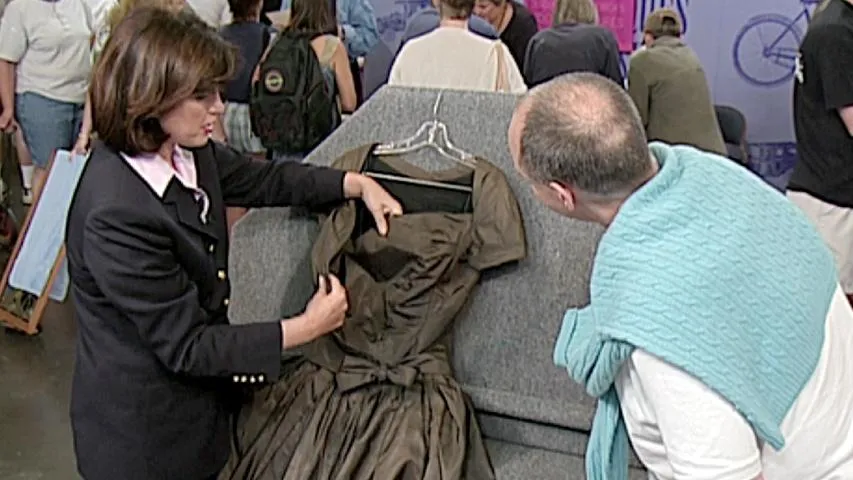APPRAISER: This sort of arched support under here, this is a very rare feature. In America, it was only used in Boston. This table is a wonderful example of Boston classical furniture. It's got some lovely features. If you start with the top, you can see this bird's-eye maple in here, this veneer that you see on the top and on the drawers. This type of veneer was very popular in the Northeast, in Boston and into New Hampshire. It also has these outset rounded corners on all four corners. It's from a vestige of four legs. If you think of other furniture, it usually stands on four legs. And actually, it's missing, right here, a little decorative drop. It would have come down just a little bit further, possibly like an acorn drop. And we go under further, I want to show you this sort of arched support under here. This is a very rare feature. It's a European design, very much favored in England in the early 1800s, and in America, it was only used in Boston. So again, it's showing us where this wonderful work table is from. Again, we've got this classical water leaf carved pedestal, these beautiful scrolled legs, and then these very elaborate Rococo casters. These in fact were made in Birmingham, England, and imported by craftsmen at a great volume in the early 19th century. All these features indicate that it was made in Boston and was part of what we call venture cargo trade down south. The number of elaborate details, it indicates it was a very expensive piece of furniture. And I gather your great-great-great-grandfather...
GUEST: Was well-to-do, yes.
GUEST: Was very wealthy, ran a large plantation.
APPRAISER: Well, he certainly bought his daughter a wonderful object, and stylistically, it does date to about circa 1815, so the birthday present story seems to be true.
GUEST: Right.
APPRAISER: In the current marketplace, I think it would do very well, and I'd put an auction estimate on it at roughly about $5,000 to $7,000.
GUEST: Oh, wonderful!







